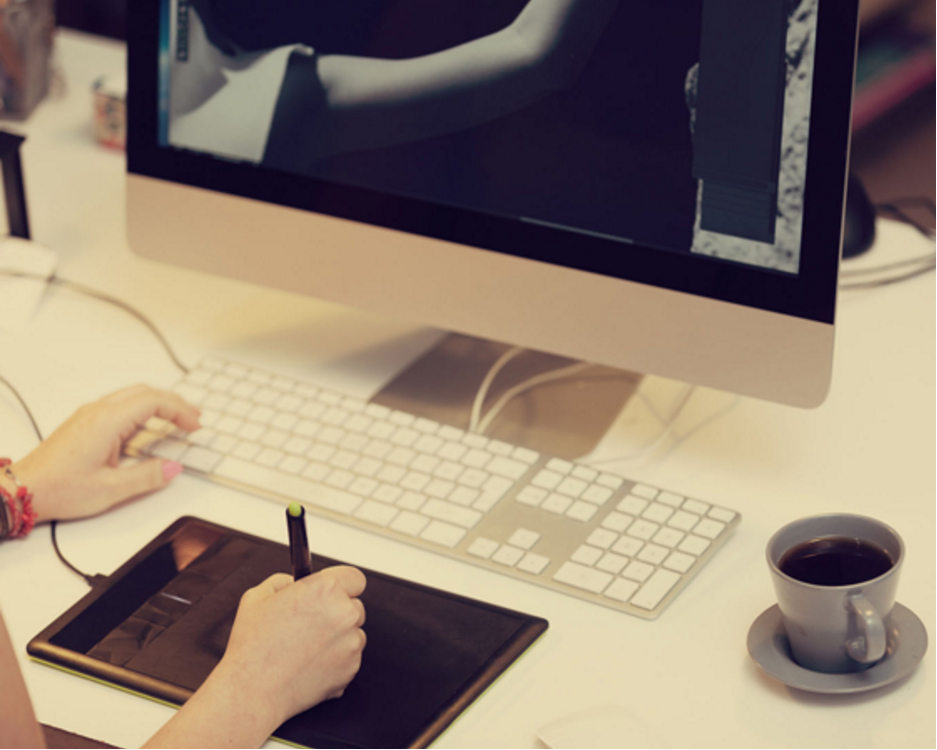![With drawing tablets, such as the Wacom Bamboo Connect shown above, artists can create beautiful paintings and graphics on a digital painting software. [Associated Press/dreamerve]](http://www.jstudentboard.com/reporter/wp-content/uploads/2016/01/digital-art.jpg)
One primary medium of digital art involves a drawing tablet connected to a computer. Drawing tablets, which are distributed by Wacom, Monoprice, Huion, and other companies, are usually flat, plastic boards with a touch- and pressure-sensitive surface that transfer the movements and pressures of a stylus onto a computer monitor.
Though drawing tablets are the most popular and professionally used method, digital artists can also use apps on their smartphones or tablets with an optional stylus. Regardless of the choice of medium, digital artists have created beautiful paintings and drawings that, unlike physical works of art, can be uploaded and shared onto websites for millions to view and appreciate.
These websites harbor unique communities of artists that can offer compliments, advice, and critique in order to help each other grow and improve. Deviantart, Pixiv, and Tumblr are such websites that foster an inclusive society of both professional and novice artists that encourage feedback, which would be difficult or rare without the instant connections of the Internet.
“Digital art is relaxing and gives me time to unwind from daily stress, and I get to experiment with a variety of tools and alter them to my liking,” said Jolie Ren, a junior at Valencia High School, in an interview with JSR. “With sharing art online, I get to share a part of me because art speaks in a way words cannot. The digital artist community is so unique and multifaceted that it can literally appeal to anyone. I also get inspiration and constructive criticism from them, and some are so helpful as to make [art] tutorials too.”
With digital art, artists have more opportunities and a wider range to display their potential. Digital paint software, such as Paint Tool Sai, Photoshop, GIMP, and Firealpaca, provides a variety of brushes and colors to use, offering a cheaper alternative to purchasing traditional paints and brushes, which must be periodically renewed. Artists are also able edit, manipulate, and enhance their painting through features offered by the programs.
In response to the rise of digital art, there has been discord concerning the shortcuts and digital options to manipulate a painting, such as resizing, altering, undoing, and enhancing. Some critics disregard it as an inauthentic and lazy way to cheat at making art. However, digital artists have taken a stand to defend their work.
“Digital art is true art. How can it not be? People of the old generation believe it not to be because they think technology has completely erased human originality. However, with the tools we have now, such as preset brush strokes, color wheels, layers, and filters, creating art is easier, but the fact remains the same–it is human hands that create the ideas, lines, sketches, and paintings upon layers and layers. How can it not be true art?” voiced Anny Huynh, a junior at Evergreen Valley High School, in an interview with JSR. Huynh is an avid digital artist and enjoys uploading their artwork online.
Karly Nguyen, a sophomore at Summit Tahoma High School, also shared her opinion to JSR. “The idea that digital art is not ‘real art’ is ridiculous. While I understand where the belief comes from, digital art requires practically the same skills that traditional art does. It makes high quality mass production way easier, making art much more accessible to the public. Just because there are tools to make the job easier doesn’t mean the job requires zero talent nor does it mean that it’s any less valuable. Advances in technology that make the process of creation easier don’t devalue the creation in itself.”
Like many aspects of technology, digital art has become a relevant yet controversial trend. It has paved the way for advancements in the arts, such as animation, design, photography, and filmmaking. Technology has not cheated art; in contrast, it has expanded the meaning of art to include the tools and culture of a modern era.

